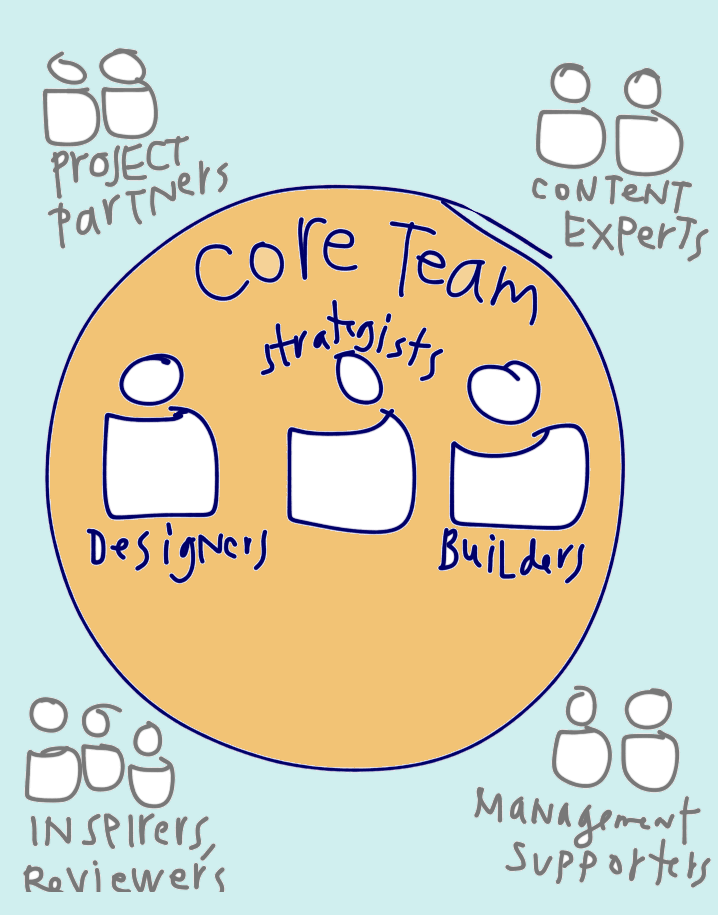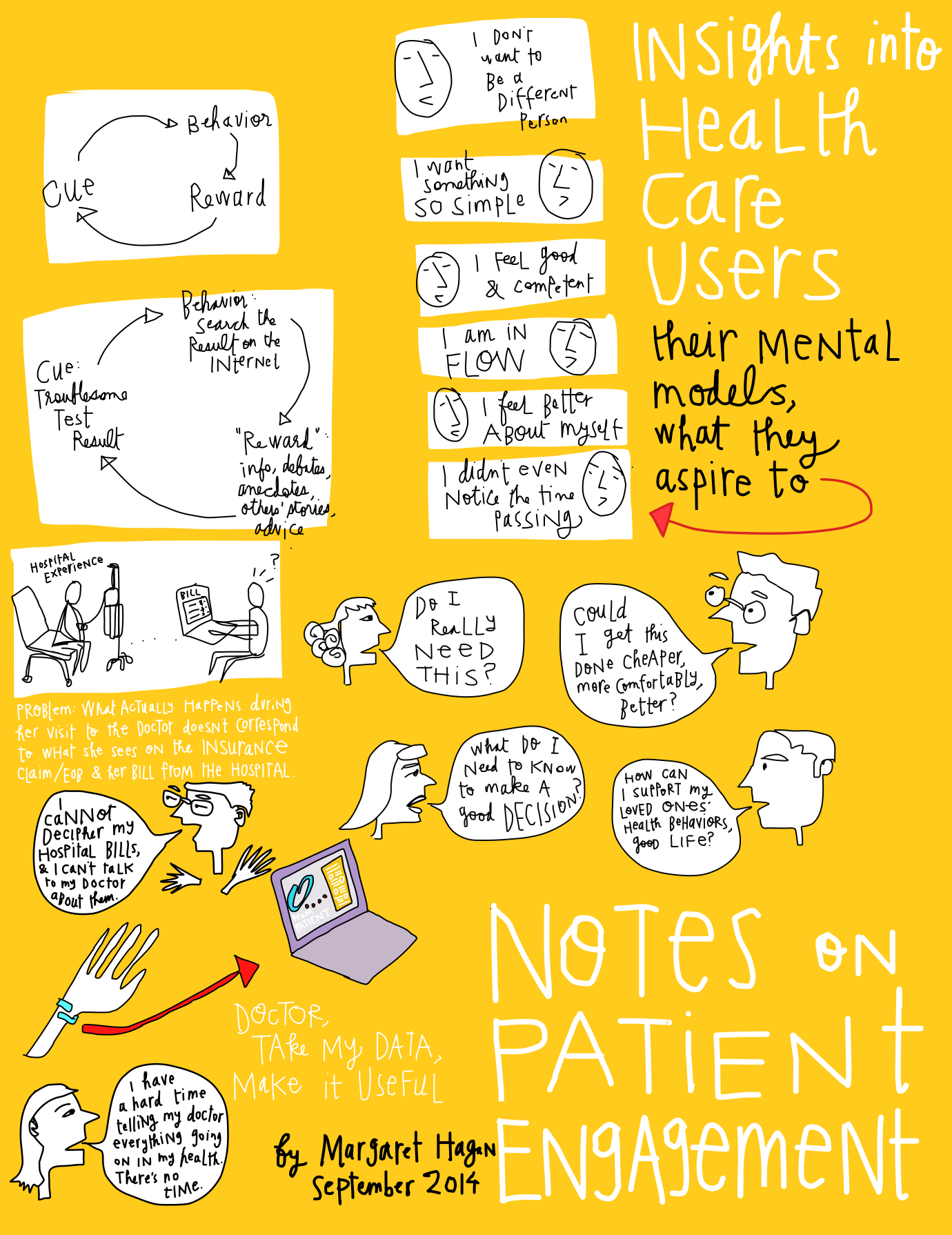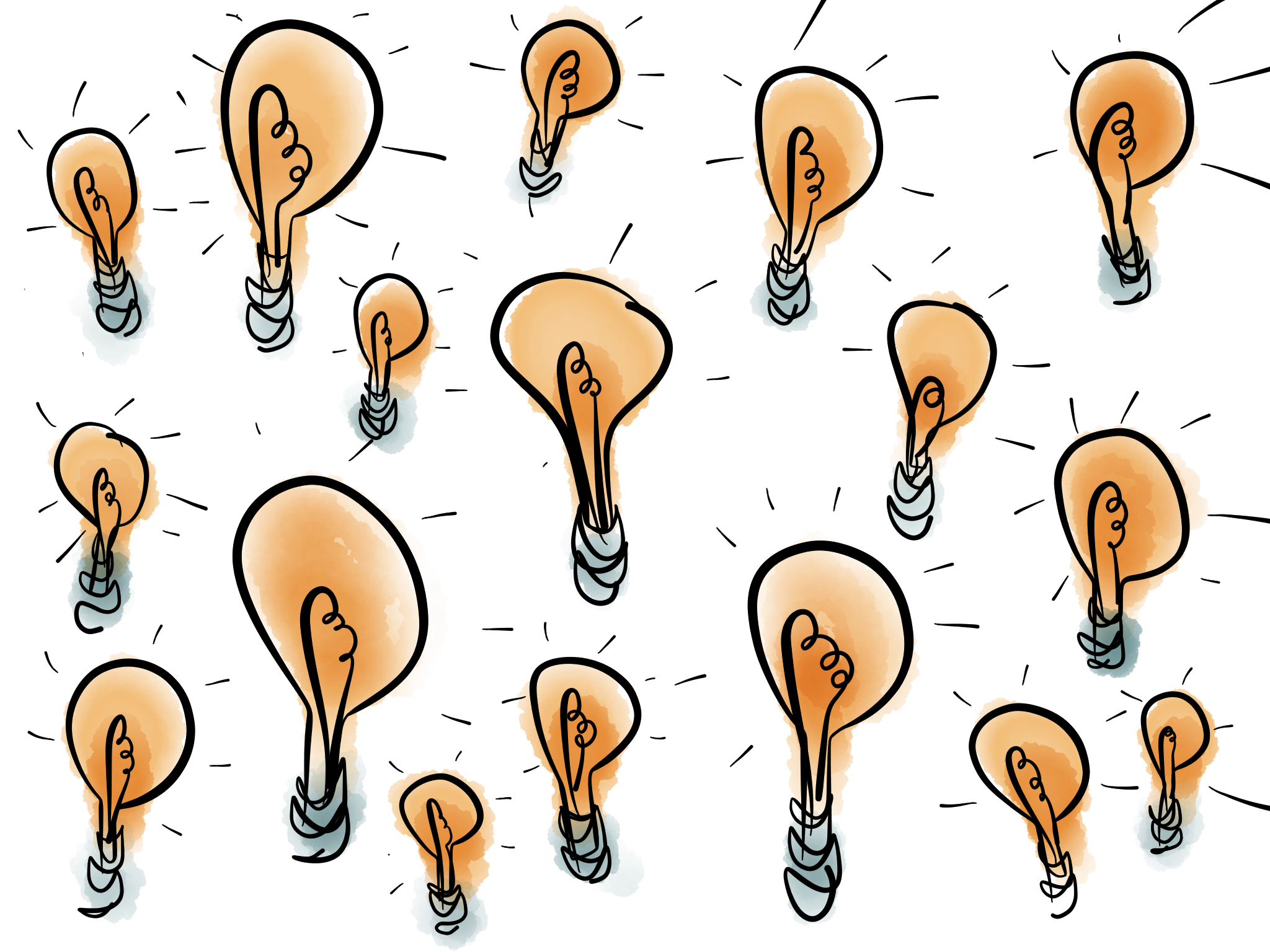A quick sketch from my notebook, on how a design-driven innovation team can be set up.

The core group should be small — 5 people or under — and have a mix of technical and content expertise. You need a designer, who can be an advocate for the users and the quality & relevance of what is being created. You need someone who is expert in whatever technology or tool is being used to implement possible solutions. And you need someone who is expert in both the content at issue, and the network of people who will be using this solution, who can play the strategist.
Beyond the borders of the core group, that’s where you want to have lots more people involved. These should be people who have faced similar challenges in analogous situations, and can inspire and guide you. You should be networked into your target users and other stakeholders in your challenge area. And you should find other influencers & creatives who can help you test & scale your solution when it’s time. This outer network should be big, random, and lively.
This map is one possible model for an agile, quick-moving innovation group. I’ve found other innovation models where there’s only one driven person at the center, who assembles outer groups of implementers, testers, and experts. Or the inner group could be a little bigger & messier, with multiple projects and streams happening at once, overlapping and feeding into each other.
What kind of organization do you think is particularly appropriate for creating successful new products, services, and systems?



1 Comment
[…] At Open Law Lab, Margaret Hagan maps a design-driven innovation team. […]